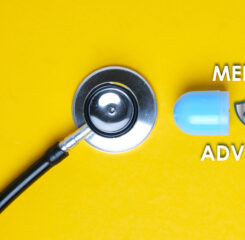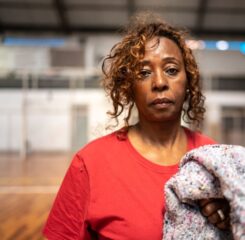FutureCAST Interviews Frances Ayalasomayajula and Brandy Stefanco
In this month’s FutureCAST videos, we learn from two executives about important initiatives in the industry, strategies for coping with industry uncertainty, the role of technology in providing services, and CAST’s impact:
- Frances A. Ayalasomayajula, Healthcare Global Senior Manager at HP, a LeadingAge CAST Supporter.
- Brandy Stefanco, CFO at CAST Patron Jewish Home Family.
FutureCAST is a CAST video series asking 24 health care executives where they think health care technology is headed and how CAST can play a role. Leading these discussions are Jeetu Kathpalia, Health IT Leader at BCBSNC and the former Director of Payer Solutions and Chief Architect at Optum; and Susheel Ladwa, Chief Editor at DistilNFO and co-chair of the America’s Health Insurance Plans (AHIP) IT Advisory Group, who was formerly with IBM Cloud Services.
The interviews were held at the 2017 LeadingAge Annual Meeting & EXPO and will be featured in Tech Time throughout 2018.
Frances A. Ayalasomayajula, Healthcare Global Senior Manager, HP
Frances Ayalasomayajula is an executive healthcare technology strategist at HP, a LeadingAge CAST Supporter. With more than 20 years in health and life sciences, she has experience in both the United States and overseas markets, including Latin America, Europe, and Asia-Pacific, leading megaprojects in clinical research, public health administration, and digital health solution adoption.
Watch the video, and read the full transcript.
Jeetu Kathpalia: What is the most exciting thing that HP is working on from the healthcare industry perspective?
Ayalasomayajula: Three pillars are the biggest area of focus right now: care delivery, patient engagement, and population health management. And within each one of those pillars, we have begun to create some very exciting technologies.
We began with having this understanding of where we are as an industry, in terms of the fundamental components of the quality, reliability, security, and integrity of those systems. We’ve built through these guiding principles by creating clinical-grade devices that we are putting in the hands of clinicians, enabling the providers to be able to deliver quality care.
Now we’re focusing on patient engagement and population health management, and doing something quite similar but in different ways. We are essentially putting the technology in the hands of the patients.
We’re creating a high-quality commercial grade set of solutions that at the same time are delivering these really robust innovations. Everything from at the edge compute to immersive compute, and the use of virtual reality technologies. We are also partnering with other solution providers, principally software developers, to introduce end-to-end solutions around areas like compliance and medication adherence and looking at how individuals can thrive in motion. It’s really exciting.
Kathpalia: What is your advice to executives in this industry on how to handle the uncertainty that’s in the industry right now?
Ayalasomayajula: That’s a great question. For organizations to be able to thrive in this kind of environment, they’ve got to take some risk, and recognize where it is safe to take those risks.
We spent a lot of time not only introducing these innovations, but also putting some scientific rigor, some evidence-based research around the introduction of our technologies.
If organizations aren’t able to look around and say, I think this is a space where we can afford to take some risks to allow ourselves an opportunity to have learnings and to be differentiating, then in the future they’re just not going to survive.
Regardless of how we are willing or not willing to invest in healthcare per se, the patient consumer is looking for a certain level of experience. What we are hearing is that the level experienced today is just not good enough. And the innovations that are being introduced are allowing for them to have the types of experiences that they want.
It may be around getting access to medical information, being able to actually comprehend what their providers and clinicians are communicating with them. Or being able to better coordinate and have support for the network of family caregivers that are going to be there to help, to continue to deliver care for those individuals within their homes and within the community. Those things are happening, and the technology is there. The question becomes for these executives, do they want to be a part of it or not?
Kathpalia: How is CAST assisting or helping in your mission?
Ayalasomayajula: In so many ways. About three years ago we became very active members of LeadingAge, and honestly, it’s been such a blessing for us. It has allowed us to continue to extend our network and interactions with those key stakeholders who are on the front lines in terms of the delivery of care to a diverse population of individuals.
It also gives us the opportunity to contribute. I have had the good pleasure of being able to sit on a few different task forces. I was super excited about being able to contribute to the most recent, social connectedness and engagement technology. I look forward to doing more at LeadingAge; they’re thought leaders within the space, and they’re doing great service for the community at large.
For more on Ayalasomayajula’s career, the biggest challenge she is facing at HP, and her advice for those who are entering the industry, watch the video, and read the full transcript.
Brandy Stefanco, CFO, Jewish Home Family
Brandy Stefanco is in her fourteenth year at CAST Patron Jewish Home Family, a leading provider of post-acute, long-term, home and community-based services, and serves as their Chief Financial Officer (CFO). Stefanco is also involved with the oversight of her organization’s information and technology needs. She received her M.B.A from Northeastern University and holds a dual specialization in healthcare and finance.
Watch the video, and read the full transcript.
Susheel Ladwa: Tell us a little bit about Jewish Home Family. What’s the most exciting thing that you folks are working on?
Stefanco: The Jewish home family celebrated its hundred and first year of operation. We have a 180-bed skilled nursing facility, an assisted living facility, a home and community-based service arm that provides medical adult day services, and care management.
We recently opened a home health agency. There we’ve started to look to technology to help older adults remain safe in their home environment so that there’s less dependence on our facility settings.
We’ve started to experiment with sensor technology from a home modification perspective to make sure that all of their home environment is safe—that things aren’t leaking and that water pipes aren’t breaking, that maybe they’re not even aware of.
We’ve recently implemented drivers’ assessment programs. It’s a simulator program that gauges the response time from the brain to the foot to the gas pedal to the brake and then compares it against norms. It helps us to provide a sense of safety and security not only to the older adult but also to their families.
With medication management, we did a beta test with PointClickCare. While it was not as successful in our community, I think it gave them a lot of insight into the different communities that are out there.
Ladwa: As a CFO, how do you see the role of technology playing in the way you provide services?
Stefanco: I think technology is vitally important. From the CFO perspective, it’s my job to make sure that I have access to data. That I understand what it means, that I understand what trends are happening within our facilities and in our communities so that I can financially gauge and strategically plan for the future.
Right now for our industry, one of the biggest challenges is that we have the data, but being a smaller organization we need the ability to dig down into that data. We need to understand that data and what the future costs are going to be.
From a mission perspective, I also think that technology is vitally important. When you transition into a nursing home or assisted living, you have a loss of community. But the things that you could do when you live at home aren’t necessarily the same things you can do in a traditional nursing home setting.
It’s important for us to invest in things like Broadway HD, which allows our residents to in real time see Broadway performances. We’re doing a similar program with the Cleveland Museum of Art; we have access to a curator. Our residents choose the artwork they want to see. It’s kind of a Skype or FaceTime technology where they interact in real-time and can ask questions.
It brings that same community feeling into our home. And I think it’s important to invest in those [technologies] because loss of community leads to depression. We, as an organization, need to make sure that we are bringing them the same vibrancy they had while living outside.
Ladwa: How is CAST helping you folks in looking at these technologies, evaluating them financially as well as otherwise?
Stefanco: We’ve been with CAST about two years now, and one of the first things we got out of CAST was the ability to do that beta test with PointClickCare. I was able to make that connection at a luncheon. Without CAST, I wouldn’t have been able to do that.
I also think being a smaller organization, I’m able to leverage what they’re doing that I would not otherwise be able to do. If I have questions, I have a whole network of really intelligent IT people I can reach out to. Our particular company doesn’t have a large IT infrastructure or a dedicated CIO. I wear that hat on a lot of occasions, and CAST has been invaluable from that perspective.
To learn about Stefanco’s experience and her advice for young executives, watch the video, and read the full transcript.

 Shutdown Week Three: Impact of Ongoing Closure on Affordable Housing
Shutdown Week Three: Impact of Ongoing Closure on Affordable Housing


